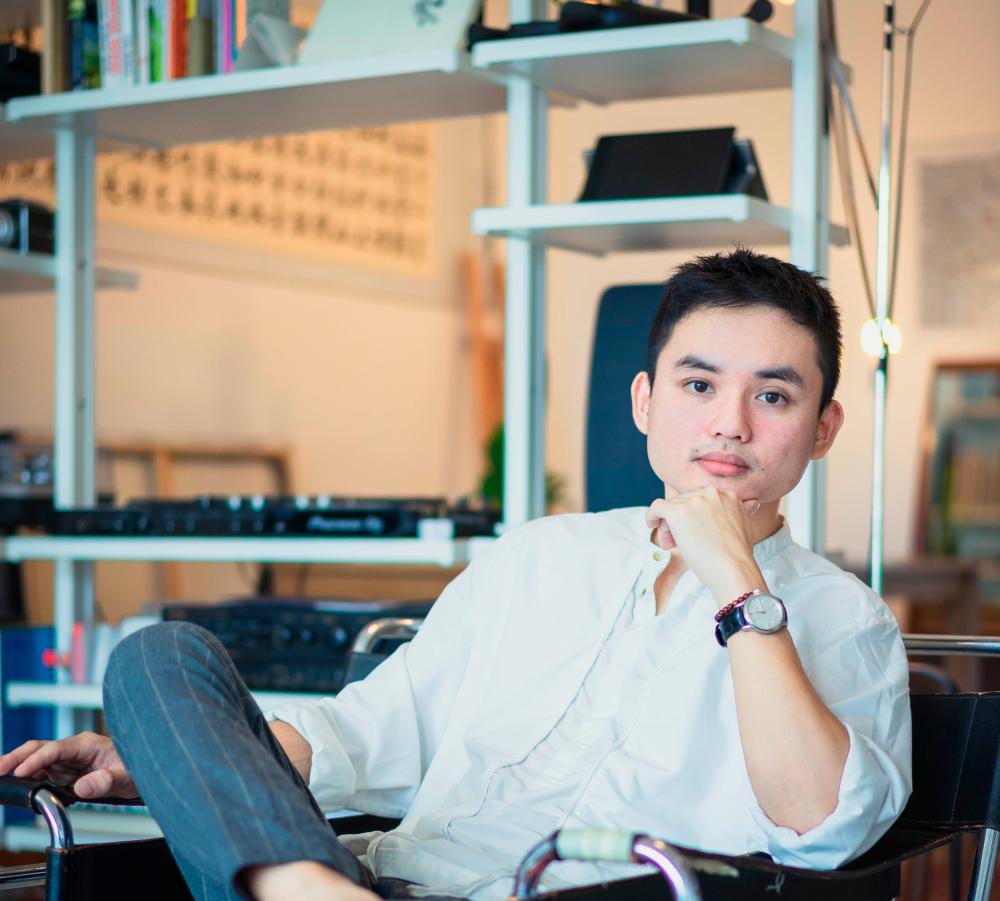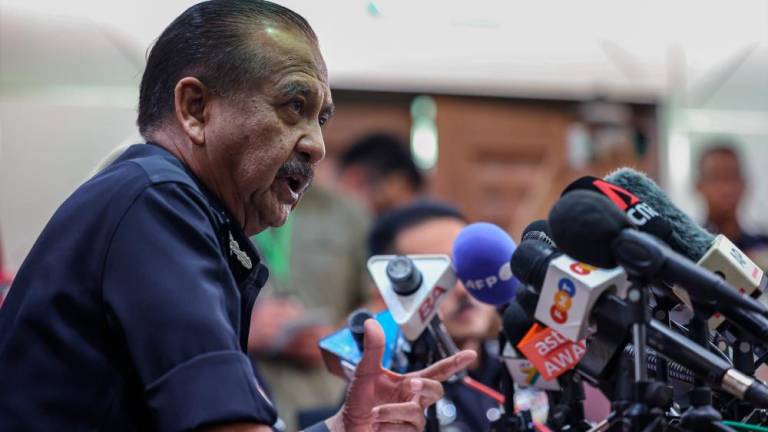THE webpage of multidisciplinary spatial thinker Chuah Chong Yan reads: “WARNING! Some videos on this site contain strong flashing lights and high disorienting sound level ... viewer discretion advised.”
His work re-imagines reality to build worlds through film, art and installations, turning visuals and static sound waves into an immersive and sensory experience.
The profound artist talks about the themes of his work at great length; from the narrative-driven work that is visceral, to the close surveillance imposed by governing authorities where our privacy is exposed to the eyes of institutions.
He shares: “The fundamental of architecture is the understanding of space. Architecture is sort of like the mother of all art, just like how the violin is called the queen of musical instruments.
“Meanwhile, creating digital art is more of a passion and hobby that I enjoy doing through storytelling, to present different narratives.”
His latest work 27 Years of Lazarian Delight can be compared to 1960s Conceptualism, with apparent elements of sculptural qualities, very much similar to the likes of Marchel Duchamp’s Fountain or Tolkien’s epic high-fantasy Lord of the Rings series, where conceptual art stresses on thoughts and the creative process via myriad methods of production as the value of the work.
How would you describe your art style and the themes you tend to explore in your digital work?
“I like this saying: ‘Through fiction, you can get a better reflection of the reality we live in.’
“I like designing fictional stories and experimenting with narratives, I wouldn’t say it’s specifically speculative design, but rather the exaggeration of the current state of the environment or setting we’re living in.”
Are you speaking of your preference for dystopic landscapes?
“I don’t know if I like it, but creating a dystopic landscape is a good thought and creative experiment.
“Throughout history, we’ve been painting dystopic landscapes ever since sci-fi existed. Looking at the present times, we’re not entirely living in dystopia; things are quite neutral, we’re neither in utopia nor dystopia.
“To design a dystopia will ultimately offer us possibilities of what could happen, and perhaps guide us in a better light from where we are right now in reality.
“It’s very similar to the Black Mirror [episode that] showed us the reality of the 2020 social credit system happening in China. The surveillance technology uses artificial intelligence (AI) to determine how likely it is for an individual to commit a crime in the coming months. If there are signs, you’ll be put into a social detention camp [before you can] commit the crime.
“So in that sense, I guess we’re already living in a dystopian world. We’re constantly under surveillance, our whereabouts are being tracked and personal information [is being] exposed through QR scans and GPS navigation apps.”
How did 27 Years of Lazarian Delight come into being?
“It’s based on an exploration of a whole new world, because I was bored with earth so my curiosity led me to toy around with the idea of a crazy exploration of this unknown world.
“I guess it allows me to acquire a new sense of appreciation for the earth, and where we are as human beings.
“It became a starting point for this written document of a newly discovered world called Somnia XYZ-G, and I also wrote my architectural thesis based on this.
“The goal is to present my perspective [of my imagined visit] to this world, and [that] I came back with this bible or atlas of the planet in a very scientific manner, from learning its language and understanding how the time and climate changes, to encounters with native monsters and plants.
“I guess the entire project is like a monologue or a recording of my 27-year journey to this world, which was created and explored by me.”
Is there a sense of materiality in digital art as found in tangible artwork?
“As a digital artist, what I’m trying to replicate is what the real world is. In fact, through digital art, I get to better understand how real tangible materiality is.
“A lot of the work goes into the material study of the different surfaces and textures. By studying the physical material, I try to quantify its displacement of textures, and how it captures the light and how the light bounces off its surface.
“I’m essentially sculpting what I see in the real world into the digital world.”













